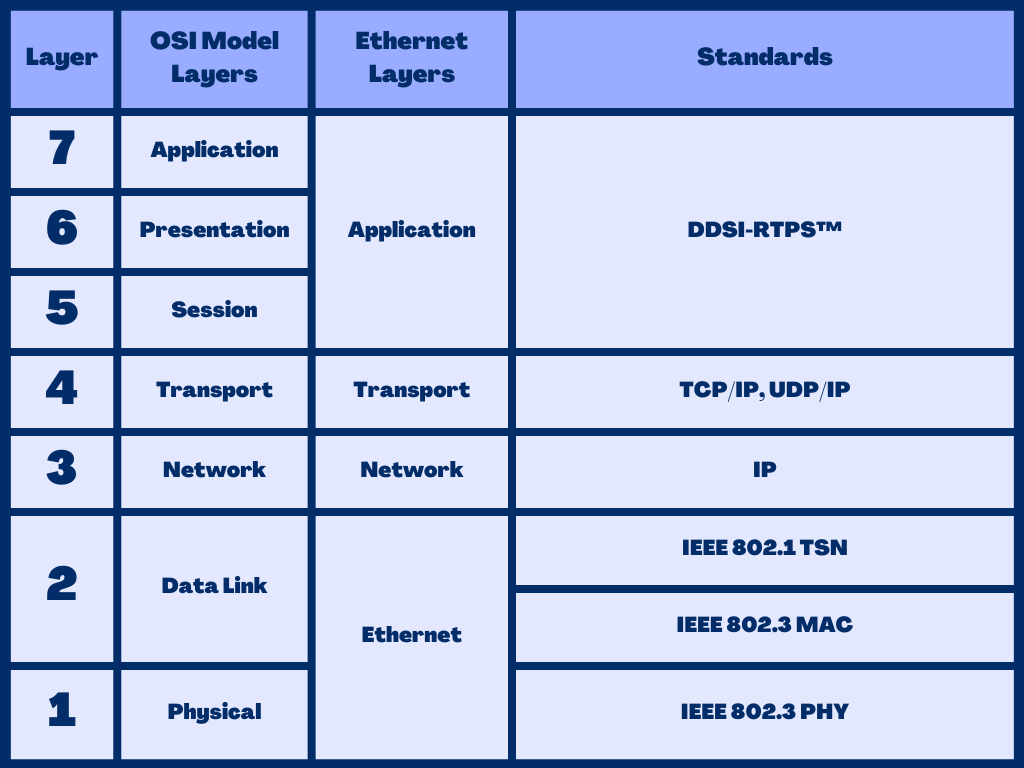TSN and DDS: Enhancing Real-Time Communication
Imagine a world where success relies on the reliable, millisecond or even nanosecond timing and deterministic delivery of data. This scenario is normal in critical areas such as industrial automation, automotive systems, avionics where real-time communication (RTC) is necessary. Achieving this level of precision requires advanced software protocols and robust communication hardware. Let’s delve into TSN and DDS technologies that enable this precision.
🚀 The Technologies Behind Precision
In this article, we’ll explore two crucial components of real-time communication systems: 👉 Time Sensitive Networking (TSN) and 👉the DDS extensions for TSN. TSN provides the hardware framework for ensuring deterministic data delivery, while the DDS extensions for TSN allow for seamless integration with TSN, ensuring end-to-end determinism.
👉 Exploring the Hardware Aspect
Time-Sensitive Networking (TSN) is a set of IEEE standards designed to enhance Ethernet networks, making them capable of transmitting time-critical data with deterministic performance, but also providing the mechanisms to allow multiple types of traffic to share the same network. TSN ensures precise synchronization, low latency, and high reliability, crucial for applications requiring real-time communication. Before these TSN standards, standard Ethernet lacked pure Layer 2 deterministic capability.
👉 Diving into the Communications Protocol
If we look at DDS in a nutshell, it is a fully decentralised communication middleware for real-time data sharing between devices and applications with the ability to tune data sharing through QoS parameters.
DDS was designed for real-time data sharing on local area networks for critical systems that require very low latency or high throughput
This is akin to TSN but operates at a different ISO OSI level. DDS operates on top of Level 4 – Transport layer, whereas TSN is designed for the Level 2 – Data Link layer.

💡 The Future of DDS-TSN Integration
With the same goal in mind, it is no coincidence that the new specification for DDS has been created to enable DDS to be deployed on TSN-enabled networks and to take advantage of its capabilities.
The DDS Extensions for TSN specification describes how to design, configure and deploy the DDS applications to run over TSN. Since TSN does not know anything about DDS, DDS has to provide a way to configure the whole DDS and TSN system.
🔧 Configuring DDS-TSN Integration
The steps to do this are as follows:
- First you design your DDS system as usual.
- Then you create a deployment design, where you specify on which nodes the DDS application will be deployed, and what requirements the DDS application will have from the underlying TSN infrastructure in terms of resources needed. This is described in the TSN Extension for DDS.
- Then we have all the information to configure the underlying TSN infrastructure such as computers, routers, switches, bridges. This configuration can be in XML, JSON, YANG format, which can be used for infrastructure configuration.
🚗 Use Cases: Automotive Systems Leading the Way
From what you’ve learned, it’s clear that setting everything up requires careful planning. You need to understand your devices, apps, and network well in advance. It’s not easy to get it right, and you’ll need to know a lot about DDS and networking.
This means that use cases will be specific to certain domains, such as autonomous vehicles, will be the first ones to use these technologies. They know exactly what they need in their vehicles. So, industries like automotive, avionics, and military will likely be the first to adopt these new technologies.
🌐 Conclusion: A Milestone in Real-Time Communication
In conclusion, DDS and TSN are complementary technologies on different layers of the OSI reference model. The integration of DDS and TSN brings a significant advancement for critical systems requiring deterministic, reliable, real-time communication.
